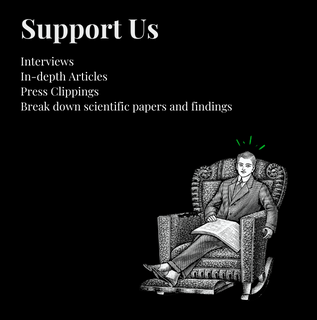A recent study delves into the consequences of imposing restrictions on flavored electronic nicotine delivery systems (ENDS): for every sale of a 0.7 ml ENDS cartridge lost due to flavor restrictions, there is an increase in the sale of 15 traditional cigarettes.
The scientific method can corroborate what perception and empirical knowledge hint at policies restricting the sale of flavored electronic nicotine delivery systems (ENDS) seem to have an adverse effect. As the sales of these devices decrease, traditional, combustible cigarettes increase. This trend also seems to intensify, with the rise in cigarette sales primarily oriented towards tobacco-flavored ones.
New research points to a worrying trend: for every reduction in the sale of a 0.7 ml cartridge due to flavor limitations, there is an associated increase in the consumption of 15 traditional cigarettes. This shift could counteract the anticipated public health benefits of reducing ENDS use, suggesting that such restrictions could, inadvertently, push users back towards the more harmful habit of smoking.
The Study
Titled “Effects of Electronic Cigarette Flavor Restrictions on Tobacco Product Sales,” the study analyzes the effects that flavor restrictions on electronic cigarettes have on the sales of traditional tobacco products. Conducted by Abigail Friedman and Alyssa Crippen from the Yale School of Public Health, along with Alex Liber from the Lombardi Comprehensive Cancer Center at Georgetown University and Michael Pesko from the University of Missouri, this study offers a multidisciplinary view on vaping flavor restrictions.
The authors combine expertise in health policy, oncology, and economics to examine how restrictive policies can influence tobacco consumption. The analysis sheds light on a complex dilemma: while, in theory, restrictions aim to protect the population, especially young people, from the risks of vaping, they could be driving an increase in cigarette consumption, creating a counterproductive and potentially harmful effect.
Centered on estimating the causal effects of these restrictions, surpassing previous research by using more comprehensive data and considering heterogeneous treatment effects, the analysis covers state and local laws in 16 states, accounting for all flavor restrictions in the United States. Additionally, it introduces innovative methods to estimate the long-term effects of these policies and pioneers the analysis of how flavor restrictions affect cigarette sales by age.
Through multivariable linear regression techniques and a bidirectional approach, the research analyzes how per capita sales of these products are affected in states with flavor restrictions. The analysis has been refined by considering national trends in 4-week intervals and adjusting for state-specific peculiarities. However, the study goes beyond initial numbers. It incorporates additional variables to consider other factors, such as related policies, environmental conditions, and the presence of alternative or complementary tobacco products. Moreover, political variability among states has been considered, clustering standard errors at the state level.
To ensure the validity of the findings, the authors have conducted sensitivity analyses, differentiating the immediate impacts from the long-term consequences of these flavor restrictions. This meticulous research offers a deep and well-founded view of a crucial matter in public health and tobacco regulation. It will undoubtedly be a reference point in future debates.
The Findings
The study reveals the impact of ENDS flavor restrictions on increasing cigarette sales across different age groups and brands. Moreover, policies that limit the sale of flavored ENDS or prohibit their sale in certain establishments increase sales of combustible cigarettes. These findings indicate that the restrictions are driving consumers to opt for combustible cigarettes instead of choosing non-combustible and less risky alternatives.
The research, one of the first of its kind, employs quasi-experimental methods to analyze the unintended consequences of these restrictions on traditional cigarette sales. The data reveal a concerning trend: for every decrease in the sale of a 0.7 ml ENDS cartridge due to flavor restrictions, there is an increase in the sale of 15 traditional cigarettes.


Even more alarming is the fact that cigarette brands that are usually preferred by underage youths also show an increase in their sales. This suggests that, instead of distancing young people from tobacco, the restrictions are precisely pushing them towards the consumption of combustible cigarettes, with all the associated risks.
The study raises crucial questions about the efficacy of current policies and underscores the need for a thorough review. While authorities aim to strike a balance between regulation and public health, it is essential to consider all consequences, both anticipated and unanticipated, of any intervention. A possible solution could be to allow a greater variety of flavors in ENDS but limit their sale to adult-only stores.
Although it’s important to note that the study has its limitations, as it does not address online sales, specialized stores, or illicit markets, the research raises a crucial question: are authorities aware that current restrictions are compromising public health by pushing consumers, especially the younger ones, towards traditional tobacco? A study of this magnitude should motivate them to reconsider the bans on vaping flavors unless they intend to boost cigarette consumption.


